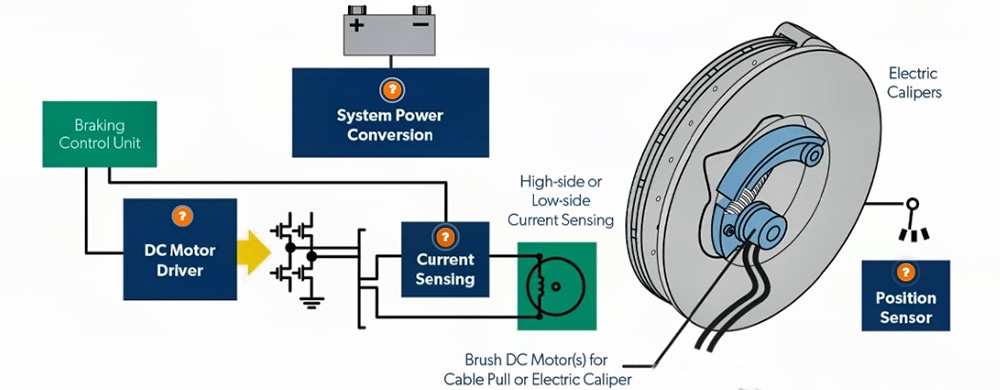Electronic Parking Brake (EPB)
Time : 2025/7/14 16:16:44
The electronic parking brake is a technology that achieves parking braking through electronic control. Its working principle is the same as that of a mechanical handbrake—both rely on the friction generated between the brake disc and brake pads to control parking braking—except that the control method has shifted from a mechanical handbrake lever to an electronic button.

The electronic parking brake, also known as the Electronic Park Brake (EPB), integrates the temporary braking function during driving with the long-term parking brake function, all controlled electronically.
The electronic parking brake has evolved from a basic parking function to include Auto Hold (AUTO HOLD).
The application of Auto Hold technology eliminates the need for drivers to maintain prolonged braking when the vehicle is stationary. When the automatic electronic parking brake is engaged, it prevents unnecessary vehicle rolling.
With a traditional handbrake, starting on a slope requires the driver to manually release the brake or skillfully coordinate the throttle and clutch for a smooth start. However, the Auto Hold function uses a slope sensor to provide precise braking force via the control unit. During startup, the parking control unit calculates data from the clutch travel sensor, clutch engagement speed sensor, and throttle pedal sensor. When the driving force exceeds the rolling resistance, the parking brake is automatically released, ensuring a smooth start.
Even in stop-and-go city traffic, enabling Auto Hold activates the corresponding automatic parking function. The intelligent Auto Hold system automatically applies braking to all four wheels when waiting at traffic lights or stopping on slopes. Whether in Drive (D) or Neutral (N), there’s no need to keep your foot on the brake or use the handbrake—the vehicle remains stationary. To resume driving, simply press the throttle lightly to release the brake.












